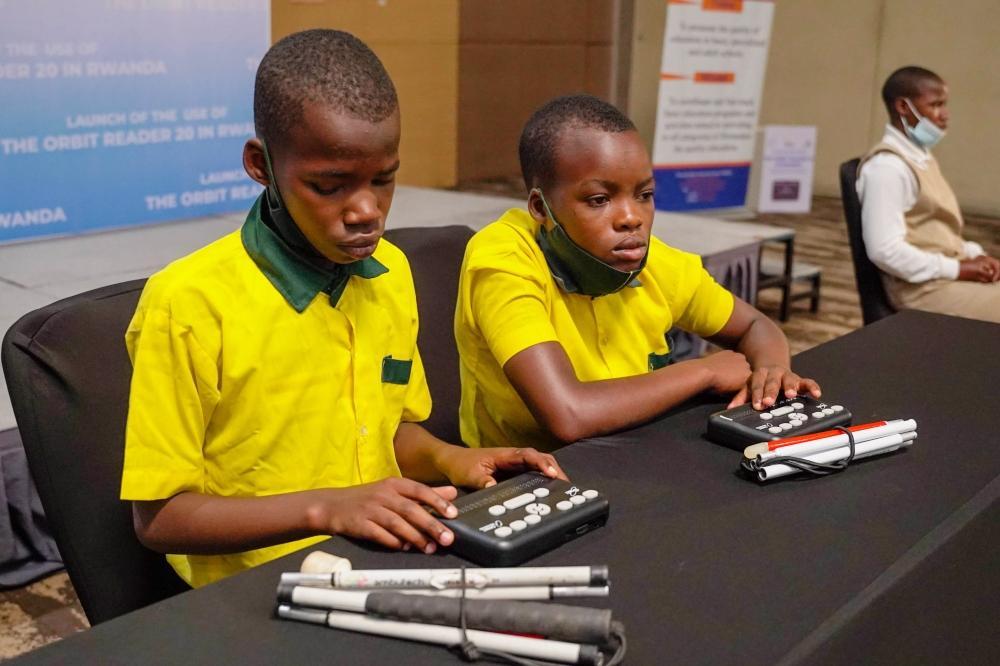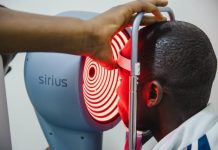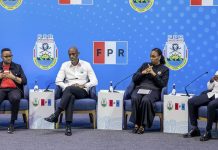Africa-Press – Rwanda. Advocates for people with disabilities are calling for urgent solutions to challenges such as stigma and the shortage of trained teachers, which continue to hinder the full implementation of inclusive education in Rwanda.
According to the Rwanda Education Board (REB), 49 per cent of teachers have received training in inclusive education. Additionally, every school now has an Inclusive Education Focal Person trained in specialised skills such as Braille, Rwandan Sign Language (RSL), and inclusive ICT.
However, François Xavier Karangwa, Executive Director of the Umbrella of Organisations of Persons with Disabilities in the Fight against HIV & AIDS and for Health Promotion (UPHLS), emphasized that the shortage of trained teachers remains a major challenge, particularly for students with sensory impairments and those who rely on sign language.
“There is also a significant gap in teachers trained in mobility and orientation for children with disabilities, particularly those who are deaf and blind. These students face immense challenges in accessing education due to the lack of specialised support,” he added.
Infrastructure and social barriers
Karangwa also highlighted that many schools lack the infrastructure needed to accommodate students with disabilities.
Despite these challenges, he acknowledged Rwanda’s progress in promoting inclusive education.
“The government has made commendable strides compared to neighbouring countries,” he said, citing a visually impaired student who recently ranked among the top five performers in national exams as an example of the positive impact of inclusive education initiatives.
Honorine Tuyishimire, Executive Director of the Rwanda Union of Little People, pointed out the specific challenges faced by individuals with dwarfism. She described how high desks in classrooms make it difficult for such people to sit comfortably.
“Desks should not be one-size-fits-all. There needs to be consideration for children with different physical needs,” she urged.
She also noted the social exclusion experienced by students with dwarfism. “Some students make fun of them or exclude them from activities, believing they are not ‘normal’,” she said.
Jacques Mugisha, a visually impaired individual, expressed concerns that while schools integrate students with disabilities, they often fail to provide the necessary resources and support systems.
“In many cases, schools integrate students with disabilities without ensuring they have the required learning materials or support services,” he said.
He also pointed out that many students with disabilities are forced to travel long distances to access schools that can accommodate them, making education even more challenging.
Government response and progress
Mary Kobusingye, Special Needs and Inclusive Education Specialist at the Ministry of Education, stressed that teacher training in special needs education remains a priority.
“Teachers continue to receive training, and we will not stop. According to the Statistical Yearbook 2024, the number of teachers trained in special needs and inclusive education increased from 2,862 in 2017 to 14,675 in 2023,” she said.
She also noted improvements in school infrastructure to accommodate learners with disabilities.
“We have new guidelines and new approaches to constructing inclusive learning environments. The number of schools with adapted infrastructure and materials for learners with disabilities has increased from 764 in 2017 to 3,392 in 2023.”
Kobusingye stressed that accessibility is not just about building infrastructure but ensuring that these facilities serve their intended purpose.
“There have been changes in infrastructure, such as accessible offices, washrooms, and newly constructed schools designed with inclusivity in mind,” she explained.
“However, the challenge remains—are these facilities actually being used by students with disabilities? We conduct inspections to ensure they are utilised appropriately.”
Regarding social inclusion, Kobusingye said that students with disabilities generally do not face widespread discrimination in schools.
“There is no significant bullying or exclusion of students with disabilities. While some students may initially feel hesitant, they eventually adapt. It is the responsibility of teachers to educate all students on equality and inclusion,” she added.
For More News And Analysis About Rwanda Follow Africa-Press






